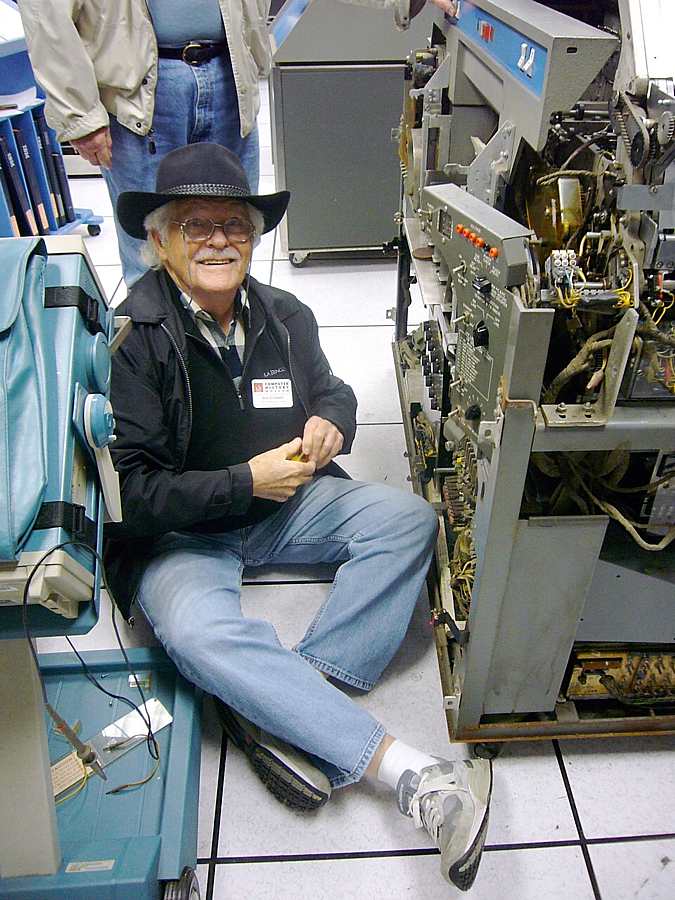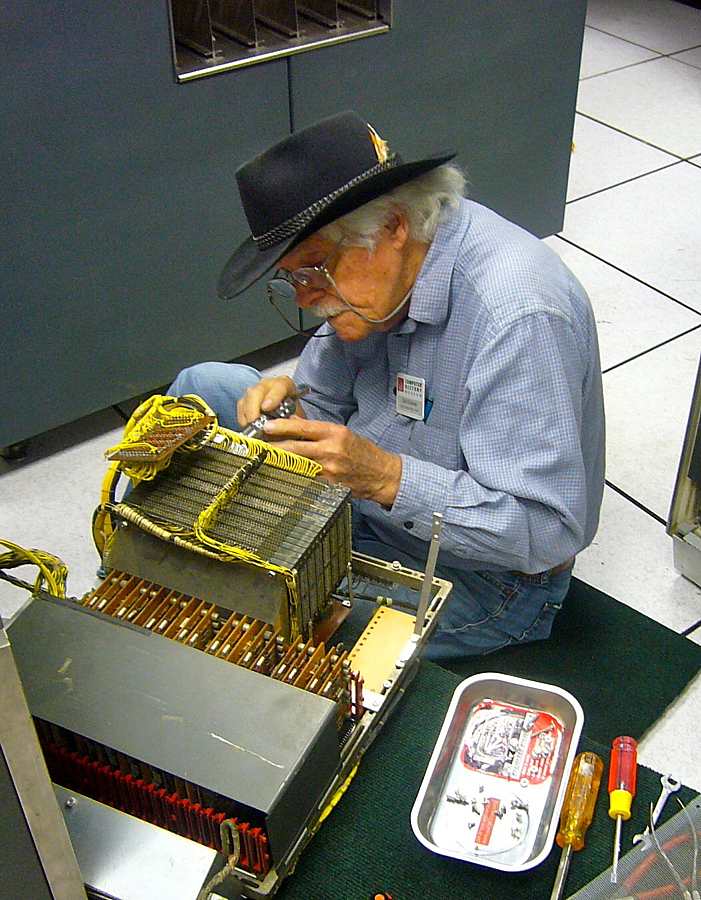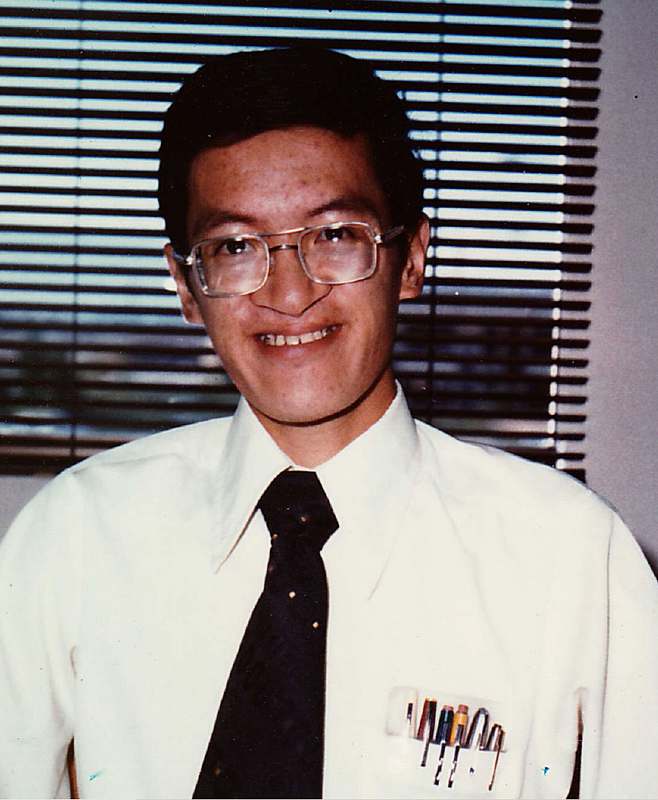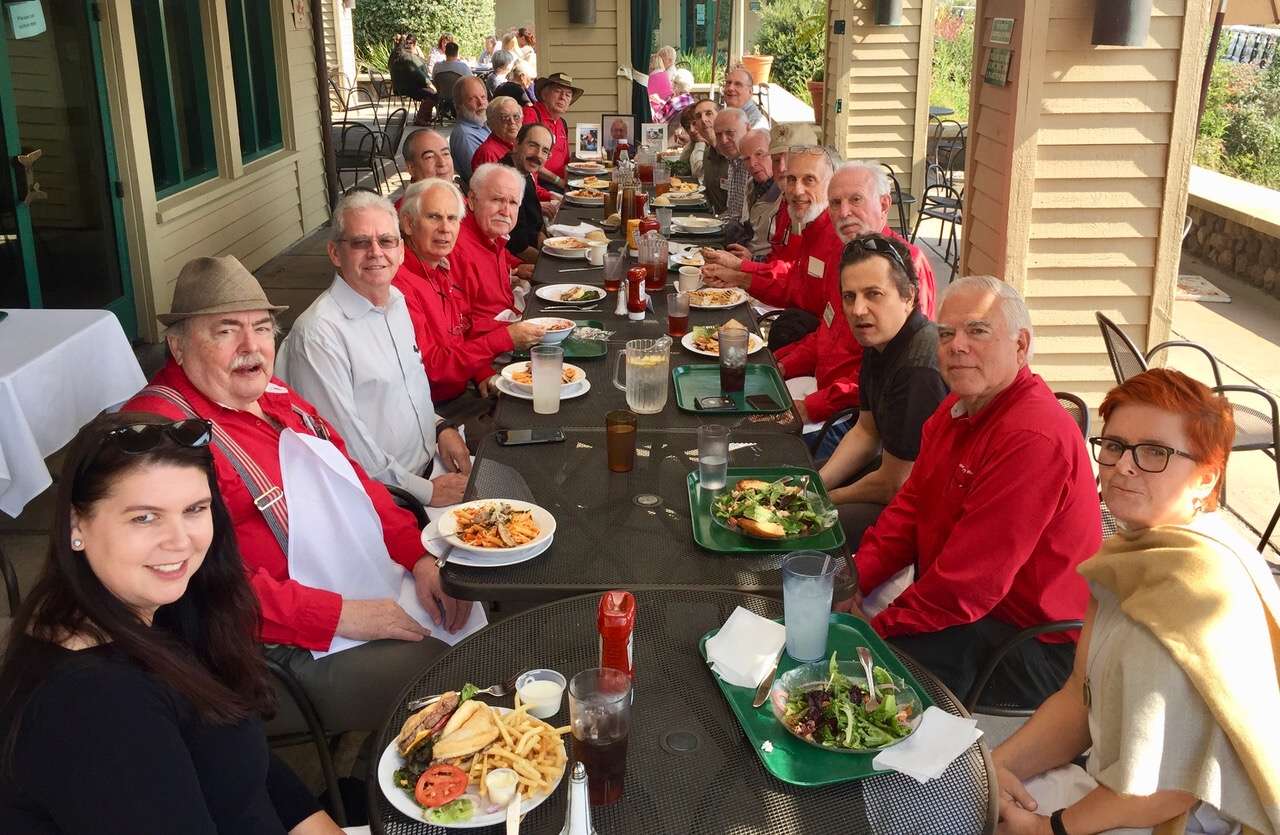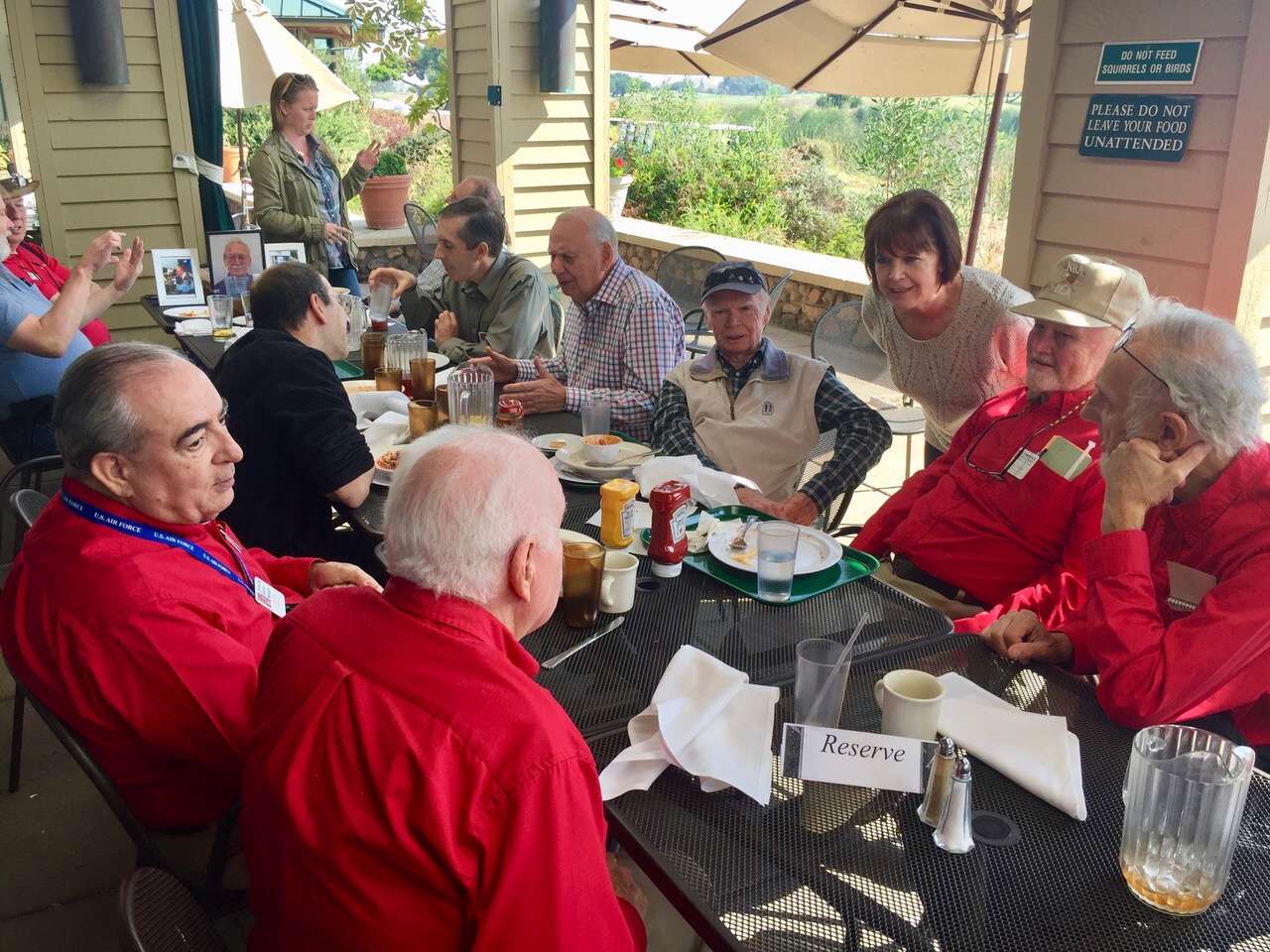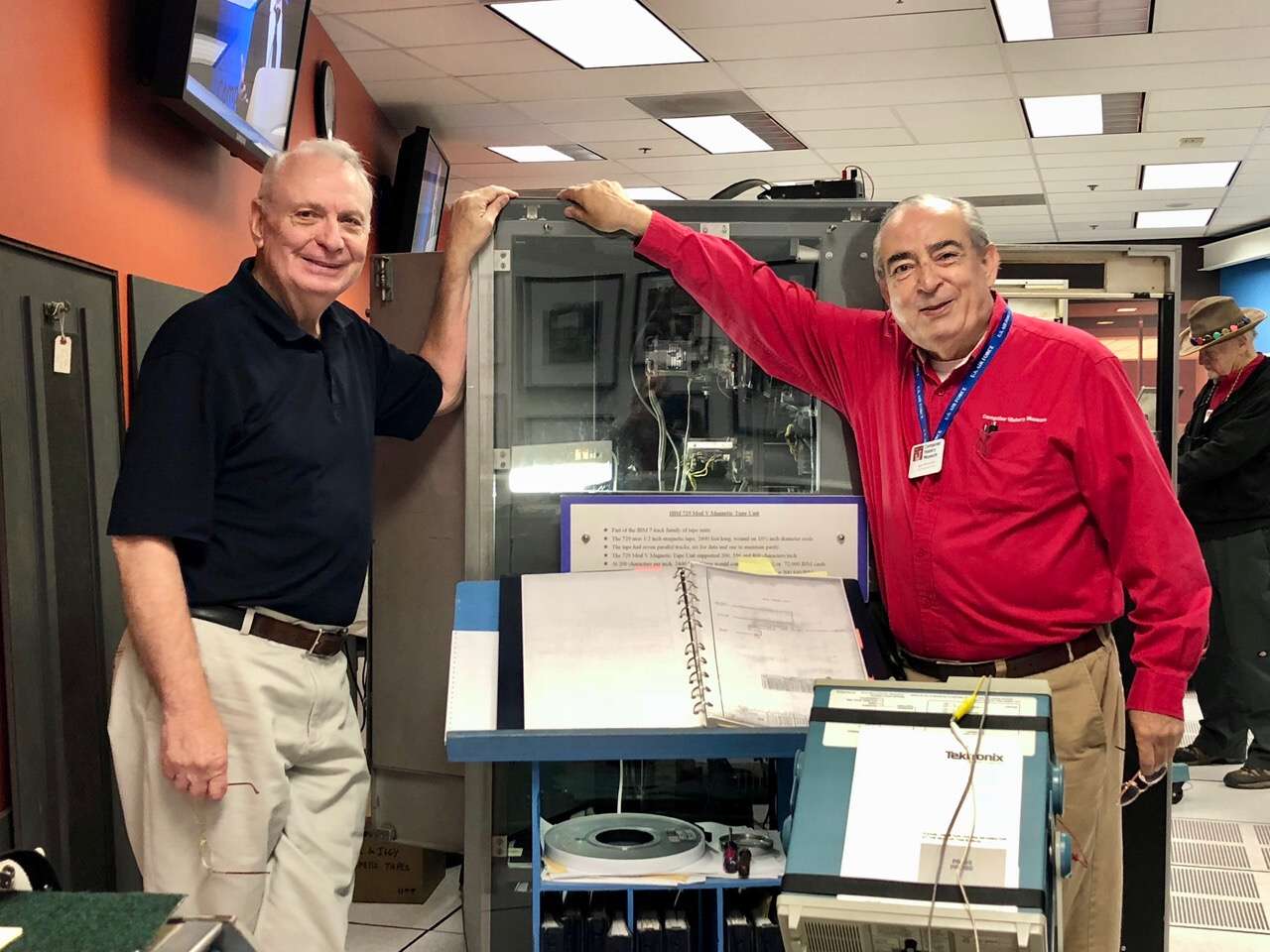IBM 1401 Restoration & Demonstrator Team Bios
The bios of the 1950s 1401 design, software, marketing teams are here
The following is a list of team members, with links to their listings
| Restoration Team
|
Demonstrators
|
Software Team
Mak, Ron - lead Ghiselli, Jack Paddock, Stan Severini, Luca Shirriff, Ken Snyder, Van Thelen, Ed |
Last owners of the
German & Connecticut 1401s Schweinsberg, Arnold Schweinsberg, Rolf Bellefleur, Solime "Buzz" Bellefleur, Scott |
| Ahearn, George R - |
|


|
In 1958 I joined the IBM 1401 development team, working under Russ Rowley and
later F.O. Underwood as an Associate Engineer. I was assigned to CPU design. Later I worked on the 1401 Emulator for the IBM 360, and after that Underwood had several of us designing the 1405 attachment. The next assignment was CPU design of the IBM 1440 under Ray Klotz. After that I was appointed manager of the IBM1285 Roll Reader an optical character recognition product until it was transferred to Rochester MN. On staff of Small Commercial Systems Engineering under Gil Baskin. This involved coordination with the IBM 360 Model 20 effort in Boeblingen Germany. Next was a transfer to San Jose CA as the manager of the IBM 2305 control unit for the Fixed Head Disk File. I live in Los Gatos. [California] obituary, local - George helped with restoring the CHM IBM 1401s for about 10 years before his death. |
Albaugh, Michael - m.e.albaugh @ gmail . com


|
One of these pictures was taken about the same time I first met the 1401,
as it was replacing the 1440 at College of Marin (formerly Marin Junior College)
in 1966.
My first excursion into emulation (see this YouTube) was to re-implement the "141" simulator that ran on the college's 1620 to the soon-to-be-acquired 1130. As with many projects in my life, that one was cancelled when the engineering department got wind of it. The other picture is more recent, but I realized it nicely bracketed the heyday of the 1401, with a turn of the (20th) century trolley and the tee-shirt from a 2014 computing conference. The 1401 (and 1130) were very good predictors (or creators) of the rest of my computing life, as both DP/MIS/IT and embedded systems programming have this odd facet: The code is supposed to work, with no blaming the customer. Those two machines, plus my first non-IBM machine, a CDC6400, also taught me just how varied computers can be.
| 
Michael says the figure ( QR code ) to the left
| is "read as http://ibm-1401.info/index.html". This is the URL of the main page of the web site you are viewing. |
Bellefleur, Solime "Buzz"

| (Deceased - April 2016) My first experience with data processing was in the early 1960's attending several IBM programming schools and working with a 403. After that I worked several years at Bridgeport Hospital with a dual-disk 1440 and then a 360/30. In 1968 I started a personal business, "OK Data Services," focused on country club billing in Westchester and Fairfield Counties. I first rented time on a 1401, and in 1970, as the business grew, I installed a Univac 1004 in my home. In 1972, I acquired the 1401 system with four 729 tape drives for $25k from Genesco and installed it in the basement, along with a motor generator set for supplying the 3-phase AC power. The lights dimmed when the system was turned on! Later, I acquired another four tape drives and a spare 1403 printer and spare extended memory. My home business also included several 029 and 129 card key punches, an 083 sorter, and several home-built Mits Altairs. The 1401 was under IBM maintenance contract until the mid 80's and, after that got too costly, I was able to keep it going with the help of IBM friends and my own know how. In 1995 I retired from my personal business and turned off the 1401 for the last time. After 12 years of storage in the basement, it was time to find a better home for the 1401. It didn't take long for my son Scott to find the 1401 Restoration web site. We immediately caught the CHM bug and saw the vision of the 1401 Restoration team. It's been a great experience working with Robert, the volunteers and the CHM staff. I wish the CHM many years of happy computing on the 1401! |


| My first exposure to the 1401 was in 1972 when, as a five-year old, my father installed this massive computing system in the basement of our home and displaced the great space that my brother and I had played in. I, along with my entire family, participated in the business, up through my teenage years. Our home was stuffed full of data processing equipment. Through osmosis, I learned how data processing works on an IBM 1401, including punching cards on a 129 key punch at age 12, running an 083 sorter and picking up chits from the country clubs after I had my drivers license. Some 36 years later, searching at 4 am on Google for a new home for my father's retired system, I found your 1401 restoration web site and got some chills up my spine when I came across all this computer equipment in your Museum that we had in our basement! I had a tough time sleeping that night and gave Robert, "the proprietor" a call the next day, which he enthusiastically responded to. After looking thru the CHM web site and talking with Robert, I thought that this was the perfect fit and would fulfill my dad's wishes for the system. Good luck restoration team and I can't wait to see the 1401 running again! |
Buder, Pat - pbuder at acm dot org

|
Butler, Mitch - < butler . mitch @ gmail . com >

|

| Mike started in 1968 writing FORTRAN for a 12K IBM 1401 with a 1311 disk drive. He quickly
graduated to Autocoder, writing numerous card and disk utilities. He wrote the initial SIMPLETRAN
compiler, a Python-like language, in 1969, and enhanced it 1970-1972 when Robert Eckert joined him
on the project. He is an EECS'76 graduate of MIT, and has done graduate work in Robotics and
Computer Science at Carnegie-Mellon. He is considered by many to be a Legend in his own mind.
from Ed Thelen - If you search "Mike Cheponis computer" on Google, your jaw will drop. Electronics guru. |
Carl Claunch - CarlClaunch51 at gmail dot com - mobile (650) 444-3829

| My first hands-on computer experience was with an IBM 1130 system, at the start of four and a half decades working with and in the computer field. Recently, I have been building a recreation of an 1130 system, as a focus for my hobby interests in electronics and computer design. Involving, as it does, a mixture of original historical computer technology and modern technology like FPGA, the experience I have been gaining may be useful in restoration efforts, to augment or substitute for unavailable products or options. I worked with mainframes for many years at firms such as Manufacturers Hanover Trust and Hitachi Data Systems; currently I am responsible for all our research on High Performance Computing and on emerging server technology trends at Gartner. Preserving the history of computing is important to me and I will pitch in to help the team in any way I can. July 2021 - unfortunately (for us), Carl has moved near Cape Canaveral, Florida - Carl also runs Rescue 1130: |
David Clementson - ddclementson at gmail dot com
|
My story is one of being in the right place at the right time. Born and raised in Palo Alto, my education in science and technology was by osmosis as much as by any other means. Between Stanford's K-6 "special" math program, Explorer Scouts at HP, or playing video games on the early Altos at PARC, a career in engineering was unavoidable. I suppose my EECS degree from Cal was also unavoidable. But while at Cal, overlooking the campus from the Berkeley hills, I had my epiphany: I could combine my love for music and audio with my engineering degree to become an electrical engineer working in the pro audio industry. The beams had crossed and my career path was set. I joined the Audio Engineering Society (AES) as a student member the next day.
My childhood Rolodex supplied me with my first job after college. I joined Tencor Instruments to design instrumentation for the semiconductor industry. There I learned the actual craft part of my profession. I also spent an inordinate amount of time writing wafer-handling robot code in 8048 assembler. But I had not forgotten my epiphany, and on a vacation to New York to attend the 1984 AES convention, I had another right-place, right-time event. A small startup called CompuSonics was presenting some papers and demoing a system that used an early version of audio compression - what we now know as MP3, etc. At the demo, I got to talking to a hippie-looking guy standing in the hallway outside the hotel demo suite. He turned out to be their chief engineer. When I asked "where are you guys located" he replied "have you ever heard of Palo Alto, California?" He hired me a year later. Right place, right time, and my epiphanic journey had begun. CompuSonics didn't fare well as a business and had to shut down after about a year. But since Pro Audio is a small community, I got a call from another audio startup looking for a hardware engineer. I started at Digidesign as one of their first few engineers, and spent the bulk of my career there. "Digi" became an industry leader, and the Pro Tools system we developed is still today the de-facto standard professional digital audio workstation. My journey was complete and without me really trying, my dream fulfilled itself beyond my wildest dreams. I was able to retire early and have since been able to pursue my own projects, outfit a pretty good home machine shop, build a few bike frames, and restore some vintage audio gear. I'm looking forward to the 1401 restoration. It may even turn into another right-place, right-time opportunity. |


| Besides a long general career in computers 'n software, I started out as an IBM C.E. fixing unit record gear in San Francisco. I actually still have my CE tool case and an IBM smock... ;-) I won't claim any of that knowledge is in my active memory now, but if you have IBM maintenance manuals, it ought to come back. At least, I am not frightened by electromechanical gear and reed-relay circuits. |

| The first real computer I used in High School was the IBM 1620 Model I. My math teacher the year
before had given me a copy of the FORTRAN IV Primer and over summer vacation I read it cover to cover
and wrote a Tick-tack-toe game program and asked if he could get me on a computer to try it. I spent
every evening after school that year that I could using their 1620. One of my programs written in SPS
assembly code used the variable word length of the machine to calculate factorials: I stopped my final
run of it after it had printed every digit of every factorial from 1! to 210! at which point I got
tired of watching long strings of zeros printing.
The first F/A-18A/B head down display that I worked was almost 30 years ago (1978) and went obsolete roughly 20 years ago. It used two bit-slice TTL CPUs and drew its stroke graphics using digital differential analyzers. When I heard that the museum wanted people to help restore their 1620, I immediately jumped on it as I thought it would be an excellent opportunity to finally learn how "my first computer" actually worked and hopefully see one running again; both goals were accomplished. After that completed I got on the PDP-1 restoration and then the IBM 1401 restoration projects too. All three projects have been very interesting. Working on hardware where you can actually see the components is much easier too. :-) Tim is now in Montana - Phone # is 406 431-0021 (thanks Lyle) |
Cotton, Bart - pickersenior @ gmail . com - home & cell 916-632-8950

|
I started with IBM as a Customer Engineer in the Santa Ana, California branch office in early 1962.
After the typical field orientation and training, I was sent to San Jose a few months for
Basic training. Training was on Keypunches, Sorters, Collators, Interpreters, Tabulators, and
how to fix greasy complicated Electro Mechanical machines in a white shirt and tie, and not get
grease on my shirt. That was a large portion of the final basic training grade.
After some field experience, IBM sent me to Rochester, MN plant for formal 1401 training. We had to do the same thing with 1401 (plus take each instruction through the hardware) and again work on the 1402 reader punch, and 1403 Printer without getting grease on my white shirt and tie (a large portion of the final grade.) From about 1963 to 1967, I spent most of my time installing and fixing 1401 Systems around the Los Angeles basin. Then, I became an Instructor at the Los Angeles IBM Education Center in 1967. When I went to the Education center, the 1401 saga ended, and I taught Common I/O, 360 and 370 Mainframes until the end of my IBM career in 1972. I remember the 2 most common 1401 bugs. One was the Start/Reset key failure when the 1401 went ape for no reason at all except a bad start/Reset Key, and the storage segment failure where the Inhibit driver card that was bad for that particular segment would burn your finger with a super hot resistor. Replacing that card fixed the problem. Easy to find! |
Crane, Ron

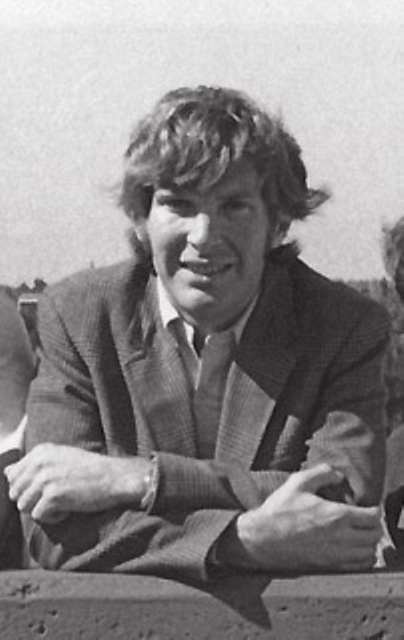
from Bob Belleville's Xerox STAR/Dandelion team photo ~ 1981 | [ Ed Thelen says "Electronics super guru.
If no one else can solve/fix it, call Ron Crane." ]
Ron died June 19, 2017 :-((
|

| I started with the IBM in 1959 as a CE in Manhattan, NYC, BO 546.
I started out in punch card equipment up thru the 407.
Shortly after I was sent as one of the first 1401 hardware CEs.
I was the roving Region 4 specialist as well as accounts in my own
branch. I continued on to 1410, 7010 hardware and then on to the
360 series. That got me into software and the beginning of the OS
or MVS systems. That's how I got to come to San Jose, as a
software SPR.
H 408-578-2014, C 408-656-7154 |
Bob Erickson

|
In 1941, at age 20, I joined IBM Minneapolis as a Customer Engineer. In Chicago, from 1941-1943
and 1946-1949, I serviced accounting machines (402, 403, 405 407) , card reproducers (512, 513, 519),
calculators (601, 603, 604) and card keypunches (026, 029).
During WW-II, 1943-1946, I was at the Naval Security Station in Washington DC, responsible for maintaining special card machines (797) used for cryptanalysis of war-time transmissions. During the Korean War, 1949-1951, I returned to the Naval Security Station, maintaining ERA 1101 (ATLAS) and ABLE computers. From 1951-1955, I was a CE for the IBM 701 mainframe at Los Alamos National Laboratory. From 1955-to-1984, I worked in San Jose's Custom Systems, which included installation of a dual 305 RAMAC with attached 407 printers for the 1960 Squaw Valley Winter Olympics (1st computer at an Olympics). Other projects involved the 1620, 1800, and 360/20 computers. Over the past years at the Computer History Museum, I've restored an 077 card collator and a 513 card reproducer.
Bob had remarkably steady hands, and soldered this core plane wire in 2007. See last item.
Mike Chaponis says "Bob E. was a huge inspiration to me, keep going, keep contributing, keep going." |
Fedorkow, Guy - guy.fedorkow (at) gmail dot com

|
Based in Massachusetts - "I've been working, very slowly, with Robert and a number of
restoration team members to put together a modern 'theory of operation'
for the machine, something that would help a modern reader (or potential
restoration team member) understand how the machine works, well enough
that they can dig into the primary IBM documents."
Author of the developing "IBM 1401, A Modern Theory of Operation" |
Feierbach, Gary - feierbach (at) comcast (dot) net - 650 591-8295

|
Gary built his first 'computer' that played tic-tac-toe when he was 15 in 1952 out of relays
from two pinball machines and wrote a paper in his English class called ?The Big Brain? about
how many vacuum tubes it would take to have the capability of a human brain. It was not the
topic he was supposed to write on so he got a C+. (It was short of the mark by many, many
orders of magnitude and would have taken up several miles of real estate. MTBF? Forget about
it!).
After spending 4 years in the Coast Guard as an ET to get the Korean GI bill, he attended U.C. Berkeley and got a BA in Physics and Math and an MS in EECS. While a undergraduate he was a computer operator at Lawrence Berkeley Lab and operated a IBM 709 (vacuum tube machine) then later a 1401 and a 7094 (transistor machines). Since then he has worked at a number of firms including NASA, Intergraph, Sun, and Apple. He also ran a number of companies of his own including Minicomputer Technology Inc. and Inner Access Corporation. He has served in a number of capacities including Analog, Digital and VLSI design and verification engineer; systems, embedded and application programmer; engineering manager, and every other skill necessary to run small high tech companies. |
Feretich, Robert - bob.feretich (at) gmail (dotty) com - 408-464-3286

| My experience with the IBM 1401 was in college when I got a job as a
second-level analyst helping the State of Illinois convert their
software base from Autocoder--mostly object decks without source--to
Cobol. When programmers doing the conversions got stuck because of some
"clever" code segment, they would bring it to me.
After college, I worked for IBM in Poughkeepsie on the 370/158, 303x, and the beginning of the 3090. I wrote firmware for the Service and Maintenance Subsystems, which initialized the mainframe, controlled its operation, collected error logs, diagnosed problems, and interfaced with the Remote Support Center. Since it hooked into all of the mainframe system interfaces, we had major role in supporting the engineers in brining up these systems and supporting field engineers during the early customer installations.
Feretich rocket pictures
|
 Group Leader - 1402 Card Reader/Punch |
 Working on SAGE |
I serviced 1401 systems between 1963 and the mid 1970's as a customer engineer and a field engineering specialist. I would be very happy to get involved in this project. H 408 395-1846, W 408 943-5801 |
Futterman, Alan - afutterman1 @ verizon . net
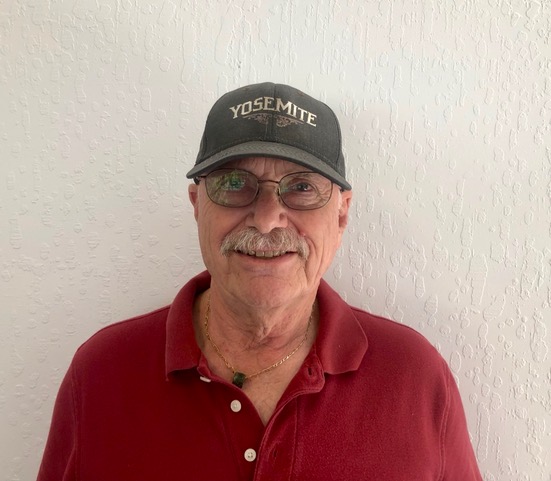
|
All of my work developing add-on memories for IBM systems was done pre-1977 when I spent
a few years working for Advanced Memory systems. We sold our systems to Memorex and others
who leased them to IBM's customers who were attempting to reduce their computer costs.
Since IBM leased their systems on a "per Module" basis they could not prevent their
customers from incorporating non-IBM equipment into their computing setup, but they were
not responsible for servicing non-IBM parts of the system and whenever a problem occurred
anywhere in the system, we either needed to fix it or to prove that it was IBM's problem
before they would respond.
- BSEE - University of California at Berkeley, CA - MSEE - California State University at San Jose, CA |
Gardner, John Van - known as "Van" - van.ii at charter dot net - vangard1 @ charter . net

|

| Although Van lives in Georga, he has contributed many artifacts, advice, and stories to this project.
He has also contributed
a wealth of IBM stories.
As found in
The One Week School That Lasted For Six, Van had more than
his share of experience with 1401s and "Overlap".
Van's web site has disappeared, and he has not responded to e-mail since ?2018? |

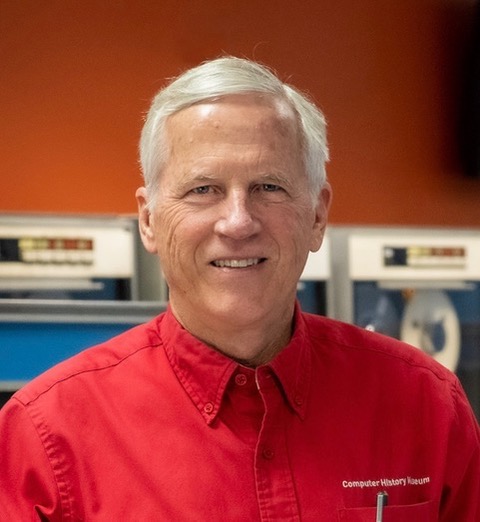
Proprietor ;-)) |
Robert Garner received a MSEE from Stanford University in 1977 and began his 41-year Silicon Valley career when Bob Metcalfe recruited him into the Xerox System Development Division (SDD) in Palo Alto to co-design the first commercial Ethernet interface and subsequently the Xerox 8010 STAR Professional Workstation and Servers. In 1981, he joined the Xerox Palo Alto Research Center (PARC) in Lynn Conway's VLSI Architecture Group. In 1984, he joined the start-up Sun Microsystems working with Bill Joy and Dave Patterson to co-architect the SPARC (RISC) architecture and co-design its first SPARC product, the Sun-4/200 workstation. He subsequently managed I/O ASIC development for the SparcCenter-2000 server and directed several full-custom microprocessor projects including UltraSPARC-I with multi-media instructions and the innovative multi-threaded graphics-oriented MAJC microprocessor. In 1998, he joined the start-up Brocade Communications as Director of Hardware Engineering, responsible for FibreChannel ASIC and switching products. In 2001, he joined the IBM Almaden Research Center in San Jose, where he co-designed the 3D, liquid-cooled, avant-garde IceCube server and managed advanced Petascale storage software development for IBM's General Parallel File Systems product. He retired from IBM in 2018. For the past twenty years, he has led a team that restored and maintains two 1960s IBM mainframe computers demo'd weekly at the Computer History Museum.
|
Ghiselli, Jack - jghiselli at sbcglobal dot net

|
In 1964, despite my education in Zoology, the U-Haul Trailer company in
Portland, Oregon gave me a provisional job, an IBM 1401 programming manual,
and orders to learn it or else. I'd never seen a computer before,
but soon was writing applications programs in Autocoder for
IBM 1401 and 1460 16K tape systems. Since I made lots of mistakes and clumsily dropped card decks, I spent many late nights keypunching and operating the 084 Sorter as well as the 1401. Later, I converted my mistakes to IBM 360 Assembler language. Moving down to Silicon Valley, I worked 5 years at Fairchild, developing and managing business applications in COBOL, PL/I, and FORTRAN, wrestling with 360/370 operating systems, and learning a little about semiconductor manufacturing. At ISS, I helped develop third-party 360/370 disk access method software using PCI-based channel programming. As a consultant, I developed embedded control software on minicomputers and microprocessors. One fun project was real-time software to control saws in lumber mills. Encased in a heavy steel frame to withstand flying logs, the PDP-8 cut lumber in remote snowy forests -- a real outdoor computer job. Finally, I founded a small software company developing and marketing semiconductor factory automation software and ran that until I retired. But, your first computer is always special. So I appreciate the CHM allowing me to revisit the 1401. |
Goerner, Matthias

|
Software Engineer at Pixar Animation Studios
Studio Tools Department My address: Matthias Goerner, Apartment 8 2309 Haste Street, Berkeley, CA 94704 USA Email: enischte at gmail dot com Phone: +1 (510) 684 4546 Web page: http://www.unhyperbolic.org/"trees" for fun - https://www.youtube.com/watch?v=gme8e_6Fnug and - http://unhyperbolic.org/rbtree.pdf |
Judith Haemmerle - H 408-835-8344 - mopalia at mopalia dotty net

|
Volunteer, Computer History Museum, 2006 ? Present (7 years)
Current: IBM 1401 Restoration Team, William Tube Re-construction Project Past: Babbage Difference Engine Installation Team, Presenter and Maintenance Crew; SAP Collection, library, front-of-house greeter. Helped Bob Erickson with the IBM 513 card punch. Seems to be familiar with physical geary oily things, gets right in there, takes pictures as memory aid.
San Francisco State University, MA, Museum Studies, 2011
-
Thesis "Policy Development for Working Collections."
Executive Director and co-founder of the Digital Game Museum, a start-up museum in Santa Clara, CA, http://digitalgamemuseum.org which has presented exhibits at Maker Faire, PAX Prime, and the Sunnyvale Library, plus gaming tournaments and other game-related events and lectures. |
Hara, Larry - larryhara898 at gmail dot com

|
I got into electronics as a cub scout; built a crystal radio, and one tube regenerative receiver. The next step in Radio requires a license, which I got when 12 years old ( K6YIM). In my later teens I got a First Class Radiotelephone license which is required to work on most commercial RF applications. I worked repairing car radios and a Broadcast radio station.
At Cal Poly I majored in Electronic Engineering and Army ROTC (signal corps of course). After graduating my duty was at the Pentagon working to automate what was then teletype messaging, very early days of global military email. The linked document John K. Howard 1972 - 2009 is a summary of my professional career. I worked for large companies (IBM, Panasonic) in middle and senior management. After many years I developed an interest in using technology and computers in DNA and Protein analysis and worked in the local startup environment. In retirement I have continued my electronic interest making use of embedded systems like Arduino, Raspberry Pi, and ESP 32. I am especially attracted to robotic things and make good use of a 3D printer. |
Hunt, Jim (Chip) [JimHunt at Pacbell dot net] phone cell - 650-346-4020

|
Jim knew Robert Garner from SUN days. Jim also worked on attack submarines, and has wonderful,
wild and wooly tales to tell ;-)) (And he seems to have a very practical working knowledge of
electronics :-)) Fixed our big backlog of defective SMS cards.
His formal bio is modern processor development at many levels.
|
Jelsema, Dale - (408) 314-2459 and < dale . jelsema @ gmail . com >

| And, per attached photo, Dale even lugged in his vintage 40-pound IBM service suitcase! :-)) |
Kantmann, Chuck
 Group leader - Overall System Bring-up |
I worked in manufacturing on the 1440 and was a CE in Palo Alto and San Jose for 1401, 1440, 360-75 and 370-155 from '67-72. After a stint in DC, I became a programmer back in San Jose until '91 when I left. Frank and I can fix anything. Well, so can Frank and Rin Tin Tin, so I guess that isn't much of a bold statement. Both of us have experience adjusting card tabulation equipment too. Deceased - |
Kim, Mariane - < marianehjkim at gmail dot com >

|
"Mariane studied Electrical Engineering at McGill University where she helped kickstart the first student-run hardware lab called The Factory. Prior to moving back to the USA, Mariane worked at Matrox managing the video wall product lines including graphics cards, capture cards, and multi-monitor controllers.
She was first introduced to the IBM 1401 at the CHM shortly after moving to the Bay Area. Mariane is extremely honored to be able to aid in the efforts to maintain and restore these amazing pieces of history, and hopes to be able to share her enthusiasm for them with visitors. Fun fact: Mariane grew up around multiple cultures between Boston, MA, and Montreal, QC. She is an aspiring polyglot (English, French, Spanish, Cantonese, Lebanese, Korean, and more??)" |
 Group Leader - 1403 Printer 
(As Hercules) 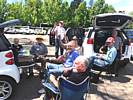
at 80, April 2014 in yellow hat |
Hercules battle with Hydra; err, the 1401 cable pulling. ;-)
Cell phone 408-621-1872 |

|

|
Joined IBM as a professional hire at 590 Madison Avenue New York In June of 1966 with the Office
Products Division Internal Systems. Designed, programmed and implemented an Inventory Control System
for Office Products Division.
I worked for IBM from 1966 to 2001 in various positions, programmer, software developer, system's
engineer, software engineer, software consultant, and program product specialists.med and implemented
an Inventory Control System for Office Products Division.
Designed, developed
|
Lala, Yash - < yashlala at gmail dot com >

|
I grew up in a different era than many of the other folks on this page. Home computers were commonplace. Computing companies had finally realized the value of the "non-engineer" demographic; they were trying to make computers simple enough that the average office worker could use them. And these companies succeeded! Here's a list of techniques that got child-me through the Windows 7 era:
This isn't a rant about the alleged "dumbing down" of computers; I don't subscribe to those views. Instead, I'm trying to illustrate: as computers became more accessible and reliable, my generation had no real need to learn how they worked. Luckily, that need eventually came for me in the form of an old Dell laptop running an unstable Linux distribution. None of the software worked out-of-the-box, and the machine would run into issues after every new update. I learned to fix these issues -- and in doing so found a long lasting interest and career path. I finished my undergrad in CS at UCLA in 2022, and am now working on my PhD at Yale. Im broadly interested in systems for efficient data-center scale computing, although my recent work focuses on isaggregated memory systems. Please check my website for up-to-date stuff :P I live on the East Coast now; but during breaks, you might find me popping in to help out with the 1401 demos. Many thanks to Pat, Paul, and Jack for their kind tutelage, and their patience with my endless decertification + recertification cycle :). And many more thanks to all those involved in keeping this demo going. I hate to sound cheesy, but you keep that proper "engineering" spirit going too -- and I hope through all of this work, it bleeds into the next generation too. It's an honor and an inspiration to work alongside you. |
Laughton, Paul < paul . laughton @ gmail . com >
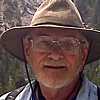
| also see CHM's oral history of Paul
I took the only computer class Virginia Tech offered in 1965. The class was FORTRAN and the programs ran on the school's IBM 1401. I loved writing those programs. I decided to make computer programming my life's career. My first job out of college was in the John's Hopkins Applied Physics Laboratory's computer center. My job gave me hands on experience with an IBM 1410, IBM 7094, IBM 360/40 and one of the few IBM 360/91s in the world. My next big step was working for IBM on the SBC Call/360 time sharing operating system. During my eight years there, I worked on all aspects of the OS from the Basic interpreter to the file management management to networking. One of the perks of the job was that I had an IBM 2741 terminal in my home for system testing starting in 1968. It was like having my own personal computer. In the mid 70's, I realized that micro computers were going make timesharing obsolete. I quit IBM and went to work as a contractor to various personal computer companies. Some of my accomplishments during that era was writing Apple DOS 3.1, the Disk File Manager and Basic Interpreter for the Atari 400/800 and a C compiler for Cromemco. I spent the final years of my career working on digital cameras. I was the project managers for the first consumer digital cameras: the Logitech Fotoman, the Logitech Pixtura and the Kodak DC40. My last job before retiring in 2000 was as the Engineering Vice President at Flashpoint, a company that designed operating systems for digital cameras. In my retirement, I thinker with Amateur Radio (AC6B) and writing software. I am the author of BASIC! f which is a free, open source Basic interpreter for Android devices. You can program you Android on your Android with BASIC!
from
https://hackaday.com/2018/02/17/great-beginnings-for-vintage-computing-in-seattle-vcf-pnw/#more-294552
|
Lion, Dave < dnl1962 @ gmail . com >

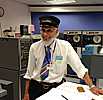
|
My first 'real job' was electronics technician at Lockheed where I briefly used an IBM 026
to help computerize record-keeping and ensure control of 'out-of-calibration' test equipment.
Over the years I worked with Univac 1108 (tape mounter and jr. console operator),
DEC PDP-11 (operator of a remote Univac site for programmers), primary standards lab (
repair and calibration tech), CDC 5600 (test and debug tech).
In 1977 Tandem Computers hired me as test and debug tech on cpu boards, i/o controllers and finished systems. As a programmer, I wrote power-on diagnostics for new products, also test procedures and software for i/o controllers (disk drives, tape drives, printers and serial comm lines). One i/o product enabled our systems to connect directly to an IBM HyperChannel. In later days I broadened my scope to crypto boxes and a DEC computer based on Alpha processors. I retired just before Compaq merged with H-P. In 2005 I started volunteering at Niles Canyon Railway as brakeman, signalman and train electrician. We restore and operate standard gauge Pacific Coast railroad equipment (vintage 1910 to 1960) including steam engines. That non-profit museum thrives on the labor of volunteers and donations. Died November 25th, 2022 |
Lion, Rob - rob dot loin at gmail dot com

| nephew of Dave Lion |
Loomis, Mark - < markloomis @ gmail . com >

|
Don Luke -

| I was trained as a Customer Engineer on the 1401 in 1960 at the San Jose plant. I became a Technical Specialist in 1961 and came to the San Jose plant to teach 1401 in 1962. I also helped write the 1405 instruction outline. Incidentally, I also taught 1620, 1710, 1311, 2311, 360 mod 20, 360 I/O controller and some stone-age programming (COBOL, BASIC etc.). expanded version Died - Oct 14, 2018 |
Stephen Madsen - s8madsen @ yahoo . com
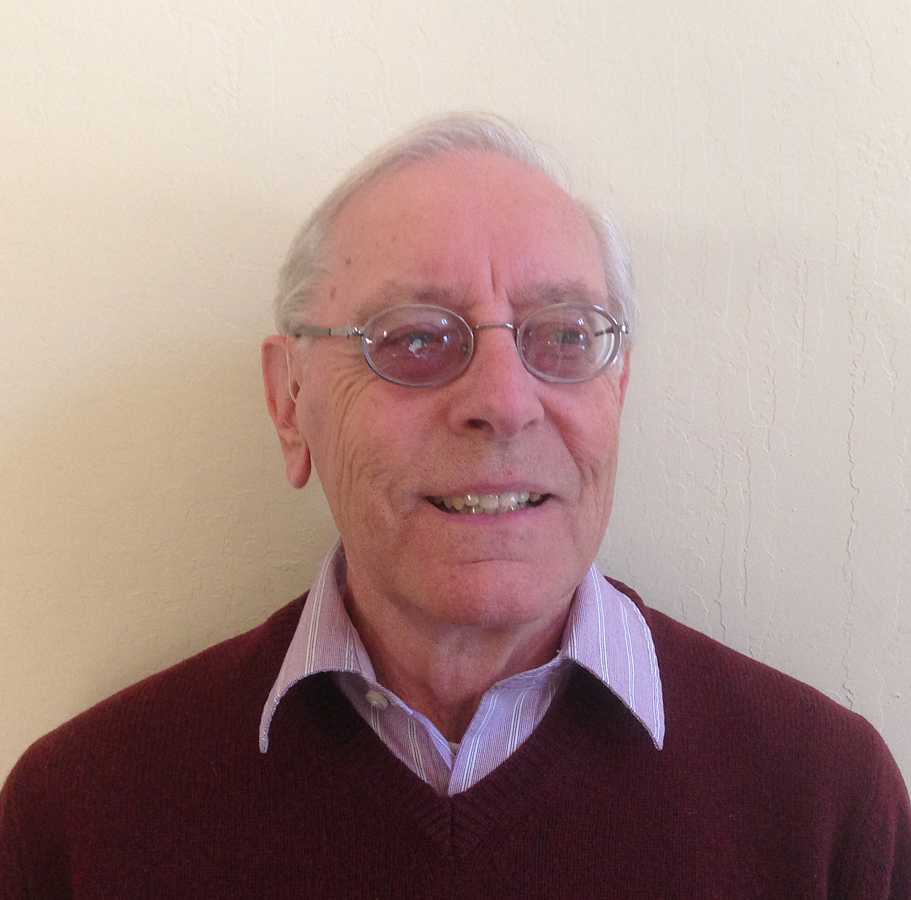
|
The first computer Stephen used was at Iowa State University. The vacuum tube computer which had 4K of memory
was built by the faculty using the IAS design.
[see Wikipedia]
Stephen's career was mostly in software. He started working for IBM in Southern California as a system engineer in 1966. New employees were mainly trained to use the System/360 computers, but tabulating machines were still in use, so they were trained to use them also. An early assignment was working with North American Aviation to convert tabulating machine applications to computer applications using RPG. In 1973 Stephen transferred to Palo Alto where he wrote programs related to the Information Management System (IMS), such as the Data Dictionary and the Batch Terminal System (BTS). In 1979 Stephen transferred to a branch office in San Francisco as an IMS specialist. In 1980 he transferred to the San Jose laboratory where he worked with IMS and other software. He eventually worked with DB2 related software including Query Management Facility (QMF) and Data Warehouse. After 38 years Stephen retired from IBM in 2004. Stephen received a BS in Electrical Engineering from Iowa State University in 1964 and a MS in Management Science from the University of Southern California in 1972. |

 Group Leader - Software
And Sorting |
I first learned how to program and operate the 1401 when I was in junior
high school in 1968. The Richmond (CA) Unified School District had a
very innovative program for its time to teach an after school and weekend
computer programming class. The 1401 was the school district's computer
system, and it did everything from payroll to class scheduling to scoring
mark-sense cards from students' standardized tests.
So there I was, a miniature proto-nerd learning how to keypunch cards, program in FORTRAN and Autocoder, and operate the "big mainframe" with its 16K of memory. I wrote both serious programs, including an assembler and a you-against-the-computer board game, and fun programs that made the 1403 play music and do printer art. Believe it or not, I still have all the punched cards and printouts of every program I ever wrote in junior high and high school. So if we ever get Autocoder and FORTRAN IV working, I can supply lots of demo programs. I also have several data decks for the program that makes the 1403 play music. I believe I have the absolute (machine language) deck of the music program itself, but I'll have to check. I continued working with the 1401 all through high school. When I went off to university to study math and computer science, I was hired each summer by the school district to teach FORTRAN, COBOL, and Autocoder and to do statistical programming. During that time, they replaced the 1401 with an NCR Century 200 that emulated the 1401. Service Bureau Corporation (SBC) was a division of Control Data Corporation that originally was a part of IBM. CDC was awarded SBC after CDC successfully sued IBM over monopolistic practices. I joined SBC not long after that happened, and folks there were not happy. ... I worked at SBC for six months before quitting to go work for Hewlett Packard. Ron is a professor at San Jose State, Current and recent classes, also THE HISTORY OF COMPUTING SPEAKER SERIES Fall 2011 list of lectures, web casts (link updated) which are the recordings of the History of Computing speakers (including Gordon Bell, Alan Kay, Robert Garner, and Don Knuth) that I did a few years ago. H 408-323-1144 C 650-279-1514 |
Brenda Make - brendieellen at brenda-make dot com

|
I am a garden-variety electronic hobbyist and electro-mechanical hardware hacker, who has been interested in computers since buying a 64k Tandy Color Computer 2.
Some of my most fun projects were...
|
Michael Marineau - mike at marineau dot org
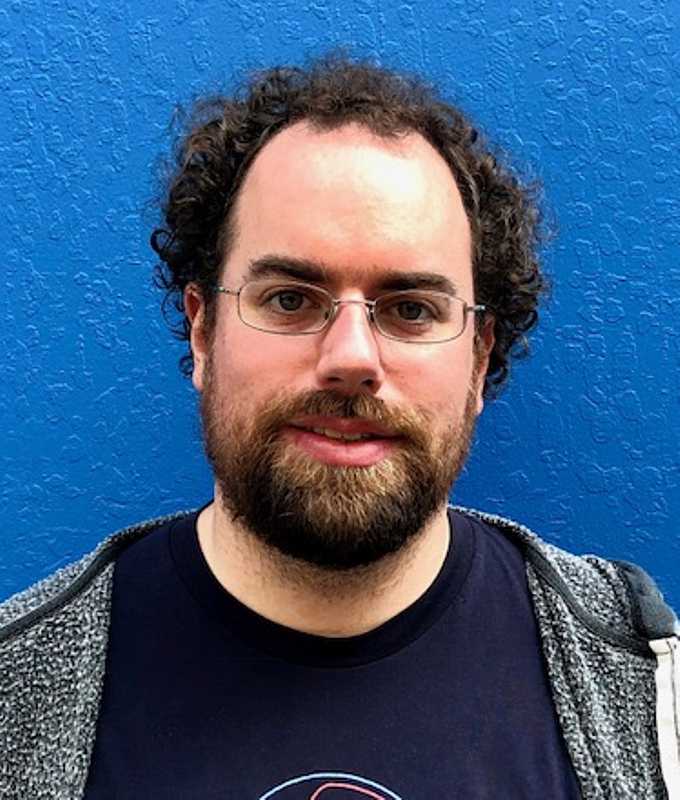
|
I live[d] in San Francisco and spend my time volunteering outside growing
plants, at museums helping people, and for a rescue fostering dogs.
Previously I was playing the startup game as the lead software
engineer behind CoreOS Container Linux. After spending years building
an operating system, computers without any need for such frivolities
sound quite appealing! I went to college at Oregon State University
where one of my most lasting achievements was a Firefox crop circle:
https://firefoxcropcircle.com/circle/
These days my little corner of the internet is here:
In January 2021, Micheal moved to Portland, OR |
Douglas Martin
- died September 2023

| 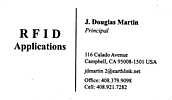
|
Menendez, Ignacio - ("Iggy") - ignalic at yahoo dot com

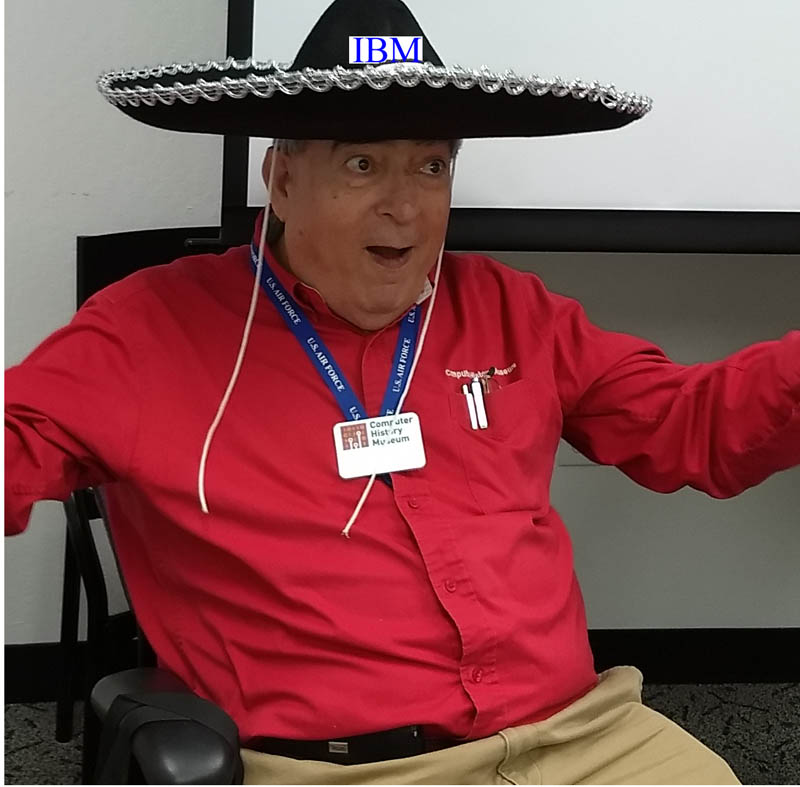
Retiring from 1401 Restoration
|
I had a great Air Force education on Radio/Radar/Missile Instrumentation, Telemetry....
Great schools from IBM as well : mainframes (2040, 50, 3155, 58, 58-3 Attached Processor, Optical readers, and DASD, including control units, from 2311 to 3390 and all in between. In all cases I had formal classroom and the LAB, aka On the Job Training (OJT). Also worked on the final test line in San Jose, Rochester, and Poughkeepsie.... I have had the opportunity and pleasure of being an instructor in the USAF and IBM.
Chronological detail.....
1961-1965: USAF Vandenberg AFB, decoding and processing digital PCM/FM
Telemetry data, of Minuteman ICBM test flights.
Started with IBM in 1965, retired 2000.....
May 25, 2018 - Iggy has moved to Ajijic, Mexico (on a lake just south of Guadalajara) and will no longer be able to (hands on) help us with our tape drives. We will all miss Iggy. Nov 6, 2019 - Iggy has been in constant supportive contact, and visited us today, "helping put the new bearing into the 729 drive vacuum pump and finished reassembly." 2020 - Iggy sent this for Christmas Dec 2022 - where is Iggy? - "Well, it was from Ajijic, MX., to Texas, then finally to Pismo Beach, where I have been now for 15 months." |

| I am a retired IBM'er with some long ago experience with the 1401. At that time I was a Systems Engineer in Washington, D.C. and installed several 1401s in the Navy and Marine Corps headquarters. I also taught several RPG classes to government employees. Before that I was a Customer Engineer in Washington mostly with NSA. Did not do any Customer Engineer work on the 1401 but could probably read diagrams and run cables, etc. I wrote several programs for the 1401 in assembler. |
Mohan, Bhushan - bmohan at gmail dot com

|
I started my career in 1971 with IBM India as a Customer Engineer and
was initially trained and assigned to maintain the1401 systems along
with even older Unit record machines. IBM 1401s were the most popular
systems in India till end 70s and I supported them very actively till
mid 80s just before the last of the working 1401 discontinued.
The 1401 series in India
|
Newman, Bill (cell) (415)518-7131 - wcn440 at gmail dot com

| I was first introduced to the IBM 1401 data processing system in 1963, at the age of 8.
William Satchell, the father of one of my gradeschool friends said he would take us to the
California Test Bureau where he had to get some extra work done one Saturday. On that day
I met the IBM 1401, 1402 and, of course, the 1403. An acqaintance I was not to forget!
Relevant experience:
|

|
My first encounter with a computer was when I was in high school in 1964. My math teacher would take the computer club to a university in the next town to use their IBM 1620. I did not see a computer for another 10 years when I went to work for Control Data working on a time sharing system. That is where I met my husband Paul Laughton. Next I worked for a small consulting company that did work for personal computer companies like Apple and Atari.
Then I stayed home for the next 16 years homeschooling our daughter. When she started college, I went back to school to update my programming skills. I wound up teaching computer science at various community colleges and at San Jose State University. After I retired, I started volunteering in the collections area at CHM. Now I have trained and get to be an operator for the IBM 1400 demos. |
Stan Paddock - STPaddock at sbcglobal dot net - (H) (408) 293-9342
 |
I was first introduced to the IBM 1401 in 1968 while working part-time at the Pomona, CA IBM
refurbishment facility. This was a part time job while I was attending Cal Poly in Pomona.
I worked on Keypunches, verifiers, 1401 systems and 1440 systems.
I am amazed how much I can remember after 37 years. While I spent my career at Honeywell, GTE Government Systems and Lockheed writing software, the first machine I programmed was an IBM 1401 one instruction at a time. "My other car is a 1924 Dodge Brothers Screen Side Delivery Truck.? http://www.PaddockDrayage.com STPaddock at sbcglobal dot net - (H) (408) 293-9342 |
 |

Group Leader - 729 Tape Drives 
1961 
Now |
Started with IBM in 1959 in Poughkeepsie working in the 727/729 final test department. In 1961 transferred to the Milwaukee branch office & went to Rochester for basic hardware training. About 63 went to Rochester for both 1401 & later 1440 training. Worked on both for many years. About 1965/66 IBM wanted to see if hardware CE?s could be trained in software support & so off I went to Rochester (or was it Chicago ? not sure since it seems I was always going one place or the other for school). So I worked as both a 1401/1440 hardware CE & also as a PSR. I liked both machines, as long a one remembered to reinstall the plastic guard in the 1403 hydraulic drive unit. & never try to hand pick dirt & lint from the chain. Tape drives were one of my specialties since had sent 18 months working on them in the factory. H 408-779-1247 |
Plainfield, Samuel - Plainfield at gmail dot com

|
My education with computers started in 1992 with two computers, a 486 33MHz DX2 PC and an
Apple IIGS. I taught myself MS-DOS and backed up my entire computer onto 64 floppy disks (onto
a giant zip file using pkzip) when a rogue virus infected my PC. During this time, I also worked
at the television studio in Santa Cruz, running a live call-in show and frequently doing
tape-to-tape linear video editing. After the FBI paid me a visit when I was 13 in connection
with rogue AOL "proggies," I decided programming wasn't for me.
Using Caligari's trueSpace 3d rendering software, I taught myself computer graphics for 9 years until I was able to attend the Academy of Art University in 2002 and get two degrees in Visual Effects & 3D Animation. I taught at two high schools from 2003-2014, teaching curriculums I wrote on elective classes in 3d graphics and "operating systems." Today, I work as a computer forensic investigator primarily on criminal matters in addition to incident response, breach investigations and virtually anything involving electronic evidence and data recovery. My lifelong quest for detailed understanding of magnetic storage and integrated circuits brings me to the CHM where I can contribute and finally fill in all the missing gaps of my knowledge. |

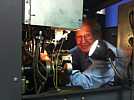
|
Joined IBM in 1956 as a CE Customer Engineer in L. A. Downtown office. Trainer on and serviced most unit record equipment, including 604,607 & 650. If machine had a gray covers, we serviced it. In 1960 became western region specialist on IBM's early transistorized computer 608. 1961 trained on 7070 computer for Automobile Club of Southern Calif. 1965 received a BS degree from Calif. State College at LA. 1965 trained on 360 mod 50 and was appointed account specialist for United Calif. Bank. In 1968 took assignment as service planning rep. SPR for mod 50 in Poughkeepsie, NY. 1971 transferred to San Jose as an SPR on the 3305 fixed head file. 1977 transferred to software, worked on several products including CICS and change team for linkage editor. Retired in 1992. After retirement remodeled 4 houses from the ground up. Sort of a jack of all construction trades. Joe is fun ! He just gets in there and fixes it ! Not much chatter, just results :-))
Oct 10, 2017, Frank King reports -
|
Chris Reid - reidjc (at) sbcglobal dot net>

|
Chris has taught 1401 programming, and successfully ran an object deck she made a "few years ago"
on "our" 1401.
more tall tales to follow ;-) |
Robinson, Tim - tbr00 at pacbell dot net

|
Tim Robinson retired in 2003 from Broadcom Corporation, where he led a group responsible for the development of Broadcom's range of WiFi wireless networking chipsets. Trained in Physics, he entered the computing field in 1980 in the UK, where, as co-founder of High Level Hardware Ltd., he designed a user-microprogrammable computer system for developing novel programming languages.
He moved to the San Francisco Bay Area in 1989, and has held senior engineering positions at several Silicon Valley startups (MicroUnity and Epigram). Robinson maintains a strong interest in the early history of computing, particularly mechanical computing devices, both analog and digital. Since retiring he has devoted much of his time to the Computer History Museum in Mountain View, where for eight years he maintained and demonstrated Charles Babbage's Difference Engine No 2, a five ton calculating machine designed in 1848. His other interests include music, and current developments in physics and cosmology.
Ed Thelen here. Tim is soft spoken and modest. For items that knock my socks off, see:
|
Rosenzweig, Allen - Arosenzweig at comcast dot net

|
I have been a docent at CHM since 2004. I led tours in the current building through
"Visible Storage" and then transitioned to "Revolution". I miss the Babbage machine that
I presented for the 8 years it was at the CHM.
I spent my career as a computer user, since my degree focused me on RF and microwave component engineering (yikes - an analog guy!) and then into sales and marketing. My first computer experience was designing a broadband microwave coupler on a GE time-share teletype terminal. I then worked at a company that was a microwave testing lab driven by an HP 2016 mini with 32K of core memory. I had a crash course in Fortran and designed custom programs for the testing of microwave devices and systems. On retirement I wanted to find out just how these amazing machines came to be, so now I can go backwards to present the 1401! |
Ross, Ken - ken (at) rossmail dot net or (650) 898-7677, San Mateo

|
see Ken demoing
Ken first worked as a programmer on the IBM 1401 during the summer of 1962 after completing his freshman year at MIT. Subsequently, he did various programming projects on the 1401 in numerous capacities for the next 3 or 4 years. Currently, Ken works closely with startup software companies as an Advisor, Board Member, CEO Coach and angel investor. Some representative companies include mscripts, Adaptive Insights, Electric Cloud, and Reciprocity. Ken was the founder and CEO of ExpertCEO (2008), Seriosity (2006), Extricity (1996), Pillar (1991), Documentum (1990) and Ross Systems (1972). Ken was also a General Partner at RRE Ventures, where he headed the firm's Silicon Valley office. Ken received his B.S. from the Massachusetts Institute of Technology - 1965, and his MBA from Stanford University - 1967. |

| I am a retired systems programmer. I worked at major computer companies from 1975 to 2017, including Burroughs (on Cobol-optimized systems), Tandem, Google, and Mips. I worked mostly on compilers and related tools, including migration of computer product lines via object code translation. That migration was my biggest career accomplishment. I also wrote microcode, extended two instruction sets, evaluated cache techniques, patented simple branch prediction hardware, and consulted on the design of Google's flash memory hardware. I am fascinated by software and hardware that is simple, efficient, and understandable. I enjoy explaining things and rediscovering tech history. I am administrator of two relevant interest groups on Facebook: Minimalistic Computing, and Computer History Musings. In an alternate lifetime, I would have become a science writer for children. My personal heroes are Chuck Yeager, Richard Feynman, and Isaac Asimov. |
Sun, Karen - karensun522 at gmail dot com

|
My bio:
Grew up in the dense streets of Shanghai with the humid summer and freezing winter, I am a recent immigrant amazed by the Bay Area's unbeatable weather, yet clueless about the outside world after 3-year Covid. By all accounts, the path that led me to being a 1401 lab operator was an unlikely one. Luckily all the magic started from sitting in a training room with
Jack Ghiselli,
Paul Laughton and
Pat Buder.
Later I became an IBM-fan by working closely with Steve Madson as his operator and got to know a lot more about IBM's company culture. I found the more I encountered the different people and got myself to interact with them, the more energy I gained from doing this activity. I became relaxed and gradually got into my Inner Game to play my role in the team. Now I am not working and cherry picking whatever interests me to learn from online resources. I become a professional dog sitter and I pretty much enjoy my time getting to know the dogs with different temperaments. |

|
"I operated a 1401 of exactly the same configuration in the summer of 1966
(between my BS and MS degrees) at Westinghouse Telecomputer Center in
Pittsburgh. We (3 shifts x 4 days) read to tape more than 3,000,000 cards
over the long July 4th weekend. One read check!!
"I'm not an ex-IBMer, my career was with DEC and Adaptec (CEO), and I've been involved, with the CHM and its antecedents for 25 years, now as a Trustee."
Grant now lives in the Seattle, WA area. While in the San Jose area, Grant had a large, well equipped, work shop.
He frequently repaired or manufactured parts for the CHM 1401 systems.
|

Grant in Seattle |
Date: Thu, Dec 03, 2020
Hi Ed, Know you are interested in steam locomotives. I'm now volunteering at NW Railway Museum machine shop, Snoqualmie, WA. trainmuseum.org Just finished 1 of 4 new Babbit bearings for the valve eccentrics. Fun/scary to run the clapped out ancient Cincinnati #5 HD mill. The bearing is 15" ID. A little different than [IBM] 729 [magnetic tape unit] capstans. Hope all is well, Grant Saviers |
Schuetz, Michael - info @ rolffson dot de

|
In August 2021,
CuriousMarc (Marc Verdiell) spread the word that Michael Schuetz had made an outstanding
Full 3D working simulation of a 1401 system.
Michael lives near Dortmund in Germany.
Jack Ghiselli points out that Dortmund is "only about 40 kilometers from Hamm,
where Arnold Schweinsberg (a retired IBM Deutschland CE) kept the 1401 which eventually came to the CHM."
|
Schweinsberg, Arnold
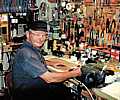
| (Deceased) -
I have worked for the IBM - Deutschland Company from 1954 to 1974 as
Customer Engineer.
The education for this was on 404/405/407/420/421 alpha tabulators, 602
mechanical calculator,
604 electronic calculator (tubes), 305 RAMAC (tubes), 1401/1405
DP-Systems, 1620 DP-System.
In 1963 at San Jose, California training on 1710 process control system, 360/370 Systems, and a lot of peripherals. Also specialist for IBM 1287/1288 handwriting and optical character readers. From 1974 to 1992 technical director at Data Processing Service Company. Hobbys: Construction electronics, Amateur Radio (DK3RW), HiFi, Telephone and PC, Motor Boating (new)
Arnold's notes about "our" 1401
|


| I have worked in hotel industry in Switzerland for a couple of years and I know the computers and microsoft operating systems better as a user since my job as supervisor at a Vodafone call center and customer service center for trade fair companies in Germany. |

| My first encounter with a 1401 was to write an Autocoder program to
read cards to tape as part of a research project at the University of
Michigan. Later I would take orders for 1401 G models to act as very
smart RJE stations in a Supermarket chain that had all it's
warehouses on-line to its headquarters before the 70's started. The
1401's ran three shifts compressing store order information to go to
the headquarters and decompressing picking documents and case picking
labels for the warehouse over the fastest lines at the time, 2400
baud. When we finally got to 4800 baud it was a real break through.
|
Severini, Luca - lucaseverini (at) mac dot com , 1 650-417-5974


|
Luca Severini likes the bay area weather even better than his native Rome, not so humid.
He has worked in software in Italy and Munich, Germany. Now he is studying computer science at San Jose State -
One of is professors is Ron Mak, who introduced Luca to
ROPE (Ron's Own Programming Environment). Now Luca is maintenaning and enhancing ROPE.
He has a ported it to the Mac and looking for suggestions. He is in contact with Van Snyder and thinking
of making a version of ROPE which edits, compiles, runs Fortran on the simulated 1401.
Luca has also written a C cross compiler for the 1401 - for hardware types, a cross compiler uses code in a different machine (say a PC) to compile code for a "target" machine, in this case, an IBM 1401 ;-)) |
Shirriff, Ken - shirriff @ righto . com
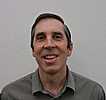
|
I started programming using Fortran on punch cards in the 1970s. I've used the IBM 1401 to generate fractals and mine bitcoins,
see a few demo programs.
I was formerly a software engineer at Google, working on Android, the Google Search Appliance, Location, and other projects.
On my blog http://righto.com, I discuss restoration of an old Xerox Alto,
explain old microprocessors at the silicon level, tear apart chargers, and other random stuff.
Robert Garner says "You're way too modest! You're one of the best technical expository writers I've read. ;-))" Ed Thelen seconds the motion. Carried by acclamation !! An experimental KWIC Index of Ken's Blogs from 2016 to Oct 2019.
| 
Robert Garner suggests this picture title - "Ken auditioning for Hidden Figures :)) "
| |
Shottan, Shmuel - < sshottan @ gmail . com > - mobile # (408)313-4500
Shmuel Shottan received his BSEE and CS from the Technion - Israeli Institute of Technology in 1978 and began his 43 - year career as a hardware developer, chip designer, computer architect and software and system development leader with the acquisition of the first startup he joined in 1981 by an American company. Shmuel had lived in CA since 1981 and in Silicon Valley since 1993.
His first job was designing the control store and memory management logic for a Unix Supermini ("Power 6/32") at TML which was acquired by CCI (Later acquired by ICL, then by Fujitsu). In 1986 he joined a team designing a RISC processor. In 1989 he joined AST Research in Irvine, CA leading the development of an X86 based multiprocessor server ("Manhattan").
In 1993 Shmuel moved to Silicon Valley and joined Parallan Computer, as head of engineering for the development of a high performance, multiprocessor server which was oem-ed and offered as the IBM PS2/295.
From 1995 until 2000 he was the head of engineering for Snap Appliances, introducing the Snap! Server workgroup NAS appliance. The company was acquired by Quantum Corporation in 1999.
In 2001 he joined BlueArc as a cofounder, CTO and VPE. BlueArc introduced a line of high performance, enterprise NAS servers leveraging hardware acceleration using FPGAs. BlueArc's NAS servers were oeme-ed and offered by Hitachi which led to the acquisition of BlueArc by Hitachi in 2011. Shmuel remained with Hitachi as SVPE until his retirement in 2021.

I plan to join "full time" in the first week of January 2024.

|
My first machine was the Bendix G-15, which was used in a summer
class. After that, I bummed 1620 time at Cal State LA. My first job
after college was operating 084, 088, 514, 519, ... for Reynolds and Reynolds
Company in North Hollywood, CA. Soon I was operating a 16k 1401 with one 7330 --
a really slow tape drive.
It also had a piano-size gadget by NCR that scanned OCR characters from paper tapes about 3 inches wide. I wrote a few dinky programs for the center manager in SPS, so he sent me to company headquarters in Dayton, OH, where I started programming in Autocoder. We had all three of the reader, printer and punch running full speed using overlap and double buffering, which we were later told was impossible to do. When we started using COBOL I modified the compiler to emit the COBOL code into the output Autocoder as comments, to facilitate debugging. I worked in Dayton ten hours per day, every day for eleven months. My wife got burned out on that, so we moved back to California in 1967 and I began work at JPL, where I've been ever since. I used the 7094 and then Univac 1108 until they put a PC on my desk in 1984. I never used a 1401 after 1967, but I still remember how to program it in machine language or Autocoder. Ron Mak's ROPE contains: - Van's 1401 Autocoder assembler - Bob Supnik's 1401 simulator If you don't write tight code, Van Snyder will pun you 'till you do. ;-)) Puns from Van Snyder Why the puns? ?Brain_Damage? This says it is for "Intellectuals" ?? |

|
My first experience with a computer other than a programmable pocket
calculator was in 1976 with a Burroughs B500 at my high school. This
was similar to the IBM 1401 in that it was a discrete transistor CPU
with magnetic core memory and tape drives with vacuum columns that
made that very special sound when they loaded. I?ll occasionally
admit to programming the system in COBOL.
During high school I took some programming classes at the local junior college. The LA community college system had a central IBM 370/158 that was accessible from the various campuses. I wrote FORTRAN programs using punched cards that were processed in batch mode and APL programs that were run interactively on Selectric terminals using the special APL character set ?golf balls?. We also had video terminals hooked up to TSO that were available for BASIC programming . At the high school we obtained some surplus JOSS terminals, which were also Selectric based. I had the job of removing most of the logic cards and redoing the backplane wirewrap (which appears to be the same type as the backplanes on the 1401) to accommodate microcomputer cards that interfaced to the driver cards that drove the Selectric?s solenoids. My final connection to IBM is that I currently own an airplane, a 1977 Piper Super Cub, which was originally owned by Thomas Watson, Jr. |

| When I got out of school, the United States had a military draft. To avoid being drafted and spending time in a foxhole in some jungle, I joined the US Air Force. The Air Force had me teaching pilots in a flight simulator near Anchorage, Alaska. After I completed my Air Force service, Pacific Telephone and Telegraph hired me for their Television Operating Center in San Francisco. Then I applied to IBM in San Francisco and I was hired. Some of my customers had 1401 Data Processing Systems. I learned of an IBM job opening in Palo Alto and IBM transferred me there to develop APL\360 (A Programming Language) for IBM 360 and 370 systems. I held a number of different IBM programming positions in the Palo Alto and Menlo Park area until I retired from IBM after 30 years. For my second profession, I enjoyed being a flight instructor at the Palo Alto Airport, until I retired in 2020. Now I enjoy volunteering at the Computer History Museum. |
Strickland, Jim - jlstrick at aol dot com -

|
In April of 1964, IBM announced System /360. I joined IBM in June of 1964, as an SE
(Systems Engineering) Trainee. SE's were the technical arm of the sales division and were
charged with helping customers make the new systems do what they were bought to do.
Because /360's were not available at that time, my first "IBM Schools" were on unit record (a.k.a. punched card) equipment and the newly announced 1440 computer. So my first useful work was to help a customer write and de-bug 1401 programs for L.S. Ayres department store in Indianapolis, Indiana. Later I did stints as an instructor, SE Manager and salesman. Then in 1978, I came west to the (then) Santa Teresa lab where I worked on main frame software. I was on the team that took IBM's System R from research through development and was planning manger for DB2, (Data Base 2, the production model of relational data base) when it was announced in 1982. Later I worked for IBM Japan in bringing Kanji (Japan's version of the Chinese ideographic characters) support into IBM's mainframe software. Now retired, I play the banjo and with my wife, Bea, am active in Marriage Enrichment. Jim was a regular docent, frequently showing the IBM 1401 systems, and also founder and editor, of Volunteer Information Exchange, index hosted by the Computer History Museum. - Jim's first issue, in 2011, and last issue 2016 Deceased, May 2016 Bea, Jim's widow, offers these Engineer jokes |
| Unable to open the .jpg file |
Henry Strickland grew up in Augusta, Georgia, where he wire-wrapped his first computer, an RCA 1802 machine, in 1977.
He has degrees in Electrical Engineering and Computer Science from Georgia Tech. He's worked as a programmer for a few companies in Silicon Valley, including Versant and Google. He was a California Cypherpunk in the 1990s, and attends Retro-Computing and Hacker conferences. He is currently programming on Radio Shack Color Computers with the Motorola 6809 and Microware's OS-9 operating system. His favorite IBM machine is the electromechanical 602A Calculating Punch, which his mom Jean Bowe was an expert on, when she worked for IBM in the 1950's. thanks, strick |

| I started working on the IBM 1403 printer January 4th, 2006 :-))
Ed Thelen here - Don't let this guy fool you.
|
Szolyga, Tom - tszolyga @ pacbell . net - Home phone: 408-741-5208

|
After 35 years of working in R&D as a Master Level Engineer Scientist, I retired from Hewlett Packard. Some of the products I designed were:
I am a Collections volunteer working in the Yosemite warehouse for Aurora Tucker. My 1401 experience goes back to my undergraduate years at the University of Rochester. I majored in Electrical Engineering. IBM donated an IBM7700 computer to the EE dept. The 7700 was a 2nd-generation SMS-based, 18-bit data acquisition computer. It was the last 2nd gen computer IBM developed before the 360 systems; only two were manufactured. I was one of the two system programmers for it. The university accounting dept had an IBM1401 that they wanted access to but did not want it to use any of their floor space. It moved to the same room in the basement of the EE dept with the 7700. I had a summer job of interfacing the 1401 to the 7700 to use the 1401 peripherals on the 7700. I built hardware to connect the 1401 Serial Input-Output Adapter to one of the 7700 I/O sub channel. In addition, I wrote the software for both machines to manage record transfers between them. Bare metal programming the 1401 was an experience I enjoyed and was different from any other programming experience. |



Docent late 1990s |
I'm an ex-competitor. but I *really* want to be on this team!
In the early 1950s I quit college, which triggered a draft notice. I decided to go into the Army for three years to get a year of techie training, then defended Chicago for two years with Nike anti-aircraft missiles. Then back to college, seriously. In 1961, I was a Field Engineer (fixer) for the General Electric Computer Division, servicing the GE-225 at Air Products & Chemicals, in Trexlertown, PA. We did the scientific work and the IBM 1401 downstairs did the accounting work. The scientific manager was trying to take over the work of the IBM shop, and there was no love lost! We got to take over the invoicing run by the time I left that site a year later. Next site (U.S. Steel in Ellwood City, PA) had the G.E. version of an upgraded RAMAC. Then to HQ in Phoenix to do diagnostic and system programming. I learned the value of well engineered, reliable peripherals, which G.E. did not have. !!! In 1966 I joined IBM Advanced System Development at Mohansic Labs, in Yorktown Heights. The TSS effort was great, but wife got lonesome for Minnesota, so I went to work for Control Data Corp., Special Systems Division, (CDC) with the 6600 series. In 1972, CDC seemed to be losing its way, so joined Measurex, doing mostly hardware/software interfaces. In 1989, Measurex seemed to be at a dead end, so joined Landis&Gyr, retiring in 1996. |


|
My 1401 experience:
I was a Customer Engineer in the IBM San Jose Branch Office which at that time was located on The Alameda near highway 17. I attended one of the very first 1401 training classes in Rochester Minnesota in the early 60's . This was in preparation for a 1401 installation at Sunsweet Growers. If I remember correctly it was the first 1401 installed in San Jose. The system was fairly large with a dual access 1405 Disk Storage and one tape drive. The next 1401 installation was at FMC "Food Machinery Corp. " This was my account also and replaced three IBM 407 tab machines, three 519's and a 604. With only one 1403 printer this became a very stressed environment. The system had a 1406 Storage Unit, 729 tape drives and 2311 Disk Drives. Around the same time, The Santa Clara County controller moved to a location on Hedding and installed a 1401 system. Which became my account too. I remember the numerous growing pains these accounts went thru with the conversions from tab machines to a computer and the long hours and callouts I endured. |
Toptygin, Alexey - alexey.toptygin at gmail dot com
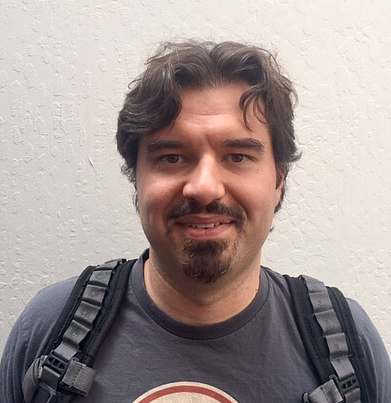
|
I'm a software engineer by trade; I started out in scientific computing at school, then worked on cellular
networking, security, email, and lately I've been working on compiler/language runtime development.
Almost all of this has been on some flavor of UNIX.
I got into vintage computing while still in school: a friend of mine bought a decommissioned transputer-based supercomputer from the university surplus store for $75 and wouldn't let anyone else play with it. Out of jealousy, I started looking for other old hardware I could tinker with myself :-) I ended up with a collection of mostly 80s micros and 90s UNIX workstations, with a bit of transputer hardware. I connected with other vintage enthusiasts on the east coast through MARCH (now VCFed) and started attending VCF East events every year. I ended up helping MARCH acquire donations a few times, so when I moved to the west coast I reached out about volunteering at CHM. |
Ugur, Arda - < ardaugur2011 @ gmail . com >

|
I am originally from Istanbul, Turkey, where I received my undergraduate and graduate degrees in civil engineering. A childhood spent without having a computer, I met with computers relatively late in life. My first computer was an 80826 with 16 MHz CPU, 1 MB RAM, 40 MB hard drive and 3.5" floppy disc drive running MS DOS and Windows 3.1. Amazingly enough, I used this computer to take my first introductory course in computers and numerical analysis in BASIC programming.
During my later years as a student, a practicing engineer, and later working in FinTech and banking, I saw and used computers as super calculators and high-tech tools without the fascination for their inner workings or their history - until I came across the name of HP-85 computer in the book "Astronomical Algorithms" by Jean-Meeus, which triggered my curiosity about the old computers - starting with the HP Series 80 computers. Subsequently, I started following great content on vintage computers on YouTube, attending Vintage Computer Festival events, and visited CHM many, many times. Over many years, I accumulated several vintage units varying from TRS-80 to TI-99, HP-85 to HP 9000, Commodore to Macintosh, along with peripherals. Not enough to be satisfied with collecting, but certainly more than enough to make my wife think I may be a borderline hoarder (computers and electronics only). This slow but long journey brought me to a point where I wish to learn more about computers - their history and the legacy of computing by volunteering at the CHM. I appreciate the opportunity to join the 1401 team and I am as excited as a first-year engineering student. I know this will be a wonderful learning opportunity, I am grateful to be a part of keeping the 1401 alive. |

|
Serious stuff:
I have been involved with high speed optical fiber interconnects through my career. I have a Ph.D. in Optoelectronics from University of Paris. I started with research at the Bell Laboratories in Holmdel, NJ, joined the startup SDL (a joint venture between Xerox and Spectra-Physics) in the valley in 1994. Then founded a series of startups, always in high-speed fiber optics: first telecom, then datacom, now computer interconnects. One of them (LightLogic) was acquired by Intel. I became an Intel Fellow in 2002. I am currently CTO of Samtec's Optical Division, who acquired my latest startup. We me make optical links for supercomputers.
- - -
|
- - -
|
| 
Less serious stuff:
| Computer and electronics and programming have always fascinated me. My first encounter with a computer as a child was with an Apple II on which I learned basic, and an early 8-bit microprocessor kit on which I learned assembly by punching hexadecimal code. I have been building electro-mechanical things for as long as I can remember. I have a mill and a lathe and an electronic lab in my basement. Latest project include building a full size R2-D2 replica. Latest computer restoration is a Mac SE/30. Time to do bigger computers. (Aug 2019 update - "... my latest computer restoration [and documentation] is that of an Apollo Guidance Computer.") For more projects, see Youtube Also some of "CuriousMarc"'s 1401, keypunch, and Friden KWIC index.
- - -
|
- - -
|
| 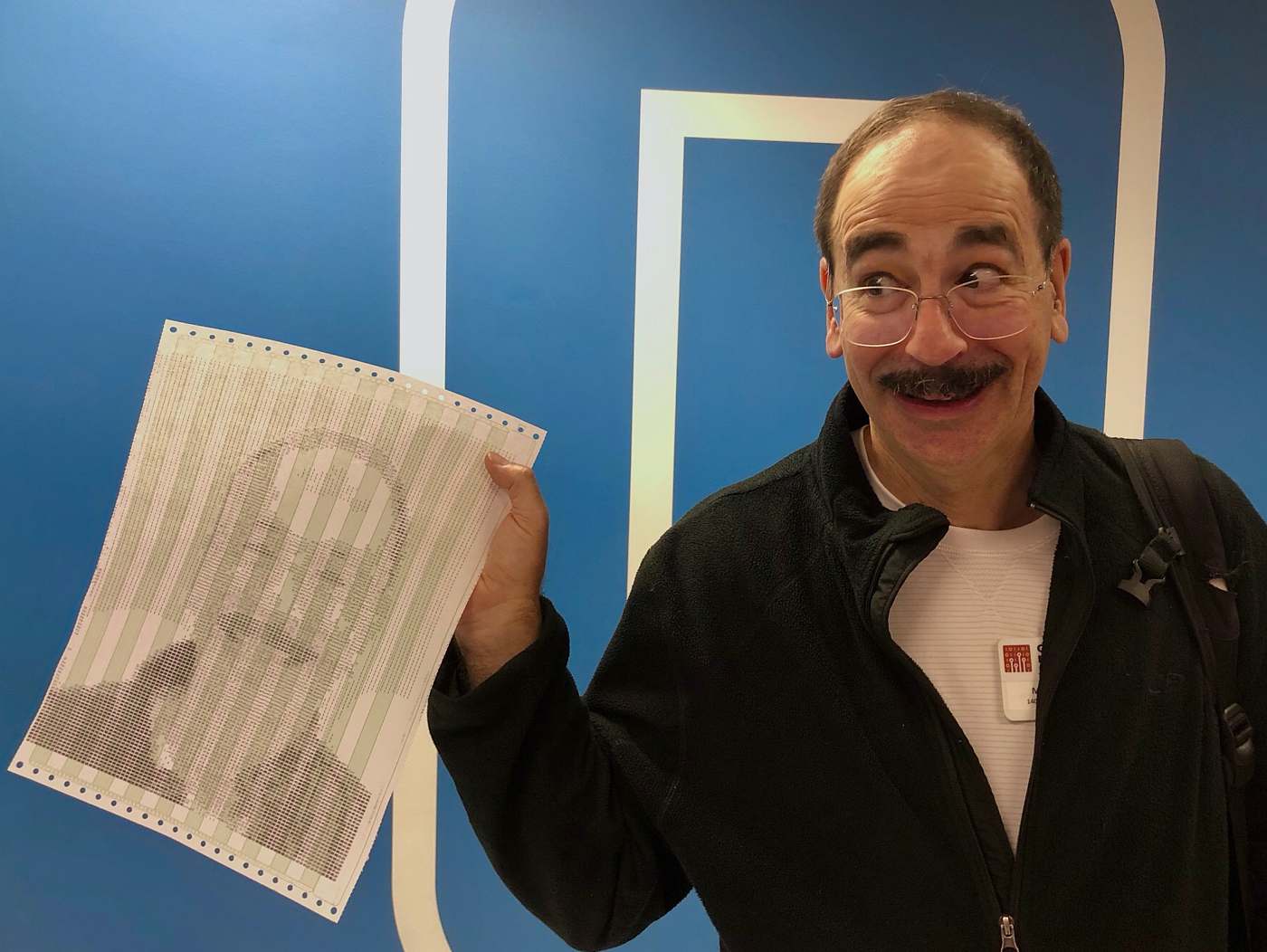
Even less serious stuff ;-)
| Marc as Groucho Marx Marc is holding an ASCII picture of himself printed on the 1401. For folks not yet "over the hill", Groucho is listed as one of America's funniest wits. His TV show "You Bet Your Life" ran for 14 years :-)) |
Wainwright, Sam - < sgw2129 @ gmail . com >

|
I've been a software engineer for about a decade, having been involved with a number of web startups, particularly in e-commerce and ad-tech. Lately, I've been more focused on DevOps, cloud infrastructure and general architectural consulting. The 1401, as it turns out, is poorly represented in those spaces, so I've never had any professional impetus to use one. This is a tremendous adventure in learning for me, and it's a huge privilege to interact with such an important piece of technological history.
I sincerely hope I don't break anything. |
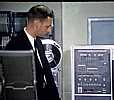
|

| I started with the IBM Service Bureau, about 1959. Operated, wired 407s, programmed 650, 1401. Conscripted into the Army, assigned to Washington DC (Headquarters Company, United States Army -- how's that for an Army unit!), programmed 1401. Moonlighted, worked for National Academy of Sciences, National Capital Planning & Parks, and a few others - all 1401. After Army, went to IBM Federal Systems in Bethedsa, more 1401. About 1967 went to Armonk, 360. |
Ron Williams

Group Leader 1401 Processor & 1406 |
I was in the systems test department in San Jose in early 60?s,
responsible for 1401 and I/O testing. The systems came in from the
factory at Endicott and Mechanicsburg, NY. Became an
expert in the 1403. Also worked on 360 model 20 system bring up and
test.
Died December 30, 2018 - We will miss his technical expertise and lively personality.
Stan Paddock set up a lunch memorial for Ron for June 26th, 2019. Robert Garner sent the following.
|
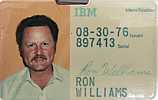
|

|

|

|
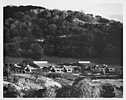
|
Folks ask about Ron's e-mail address (none). Bob Feretich made the cutest reply:
"Ron Williams doesn't believe in e-mail. The 1401 didn't support it, so he doesn't need it."



| A 1401
programmer for a bank in Rhode Island from 1961 till 1964. I did this
full time and part time while finishing my bachelor's degree. I joined
IBM as a Systems Engineer in 1964 -- just ahead of the System/360's being
announced. Actually I continued with 1401 into S/360 because of the emulators.
I went to Boston in 1968 for a [software] technical support job covering all of
New England and subsequently northern NY State too.
(One of my endeavors there was to do the product test on VM/370 to make sure that the
S/370 1401 emulators would work under VM.)
I have a couple of 1401 programs sitting in my garage. One was designed
to be a 1401 Autocoder to System/360 assembler language translator
"ASALT". However, it requires disk storage to execute. I've also come
across a complete(?) set of 1401 users manuals which may be of use with
the project. Please let me know how I can help!!
|





